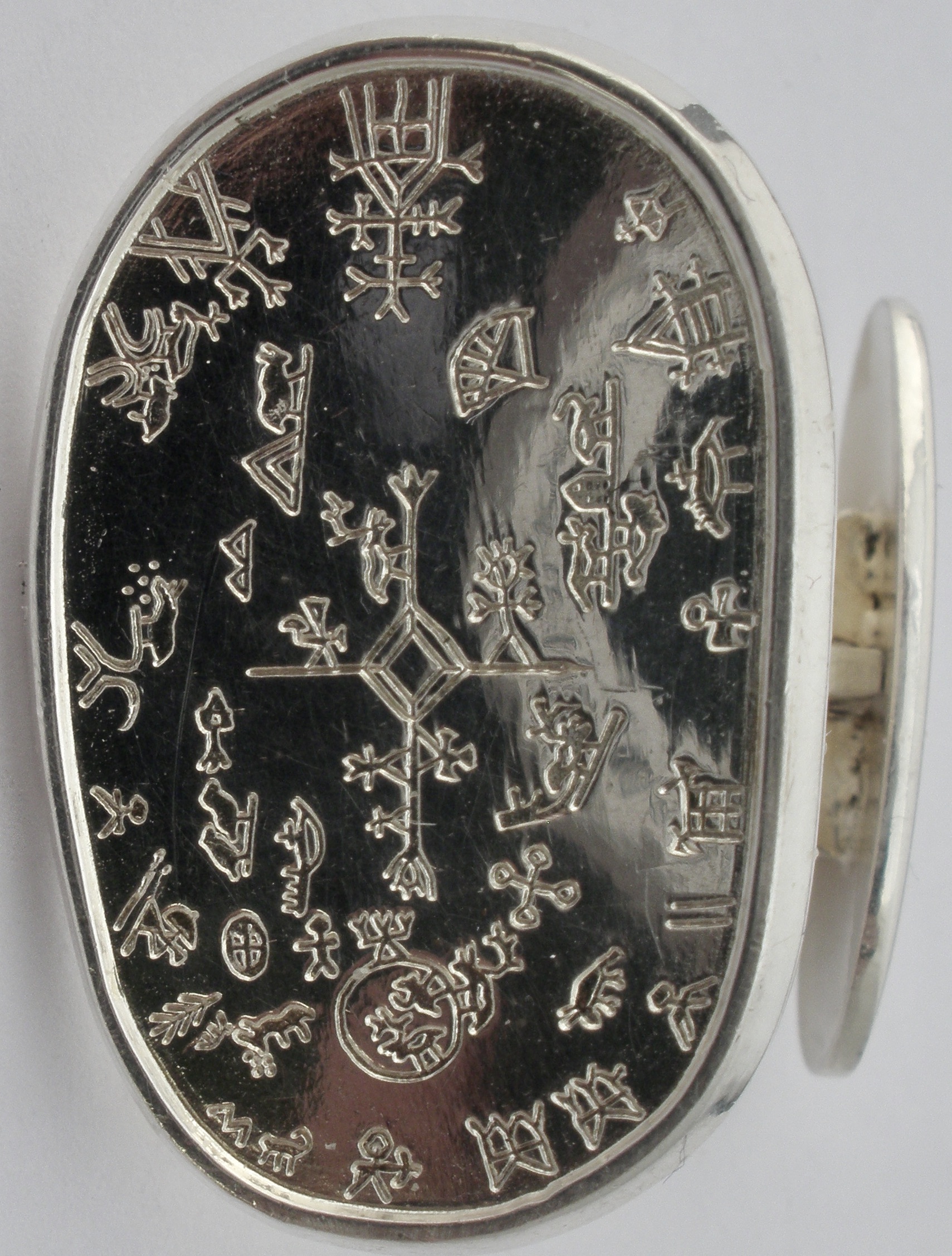Description
Lagerströms Fabriks Aktiebolag, a pair of Sami Shaman Drum (Samiska Skatrumman) silver cufflinks, Mjolby, Sweden, 1966, stamped ‘LFA‘ for Lagerströms Fabriks Aktiebolag, town mark, date letter, Swedish three crowns mark, and ‘S’ for silver, the oval panel engraved to represent a Sami Shamanic Drum in the style of a heliocentric drum, measuring approximately 2.5 cm by 1.6 cm (Ref S408) SOLD
The final image of the heliocentric drum skin showing the same design as these cufflinks is fig 6 taken from the following web site https://www.laits.utexas.edu/sami/diehtu/giella/music/noaidi.htm
These Sami shaman drums were made of reindeer skin usually taken from the neck as it was considered an appropriate thickness and then stretched across a wooden frame, predominantly of oval shape though other shapes are known. The hide was painted with reindeer, tents, storage buildings, predators, and other symbols to be used by the Shaman in ceremonies. The earliest mention of these drums goes back to the 12th century, in the Historic Norvigae, where a drum with painted symbols is described. It also gives an account of a shaman apparently raising a woman from the dead by moving his spirit into a whale. the example used for these cufflinks takes the form of a cognitive map. In the 17th and 18th centuries Christian missionaries would destroy the Sami shaman drums as they were considered to be the ‘Sami Bible’ and a symbol of idolatry. These drums are called Samiska Skatrumman in Swedish.










